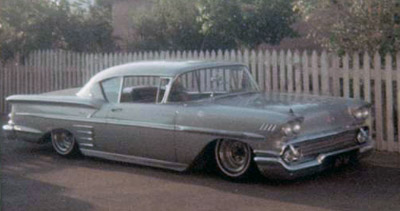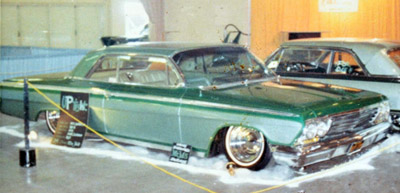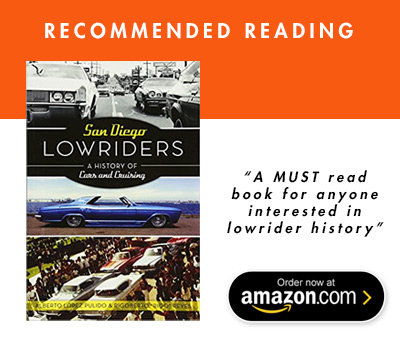Hydraulic Lifted Cars




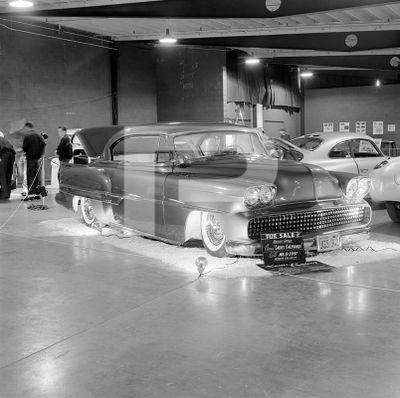





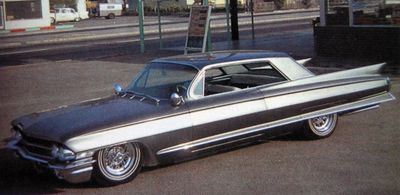









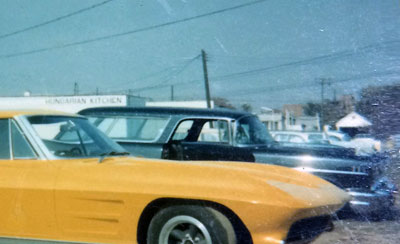








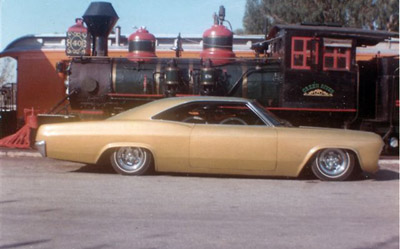


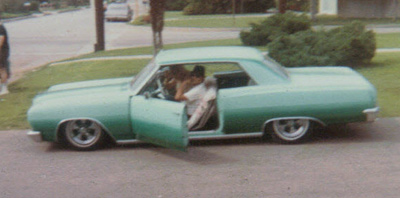




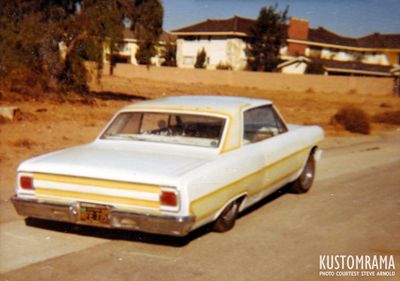














Hydraulic lifted cars, commonly known as "lowriders," have a rich history rooted in car culture, innovation, and creativity. Initially arising as a response to legal restrictions on vehicle height, hydraulic systems allowed enthusiasts to lower their cars for style and then lift them to comply with regulations. This movement began in California in the late 1950s and spread across the United States, influencing custom car culture and becoming an iconic symbol of self-expression and engineering ingenuity. The story of hydraulic lifted cars is marked by pioneers who pushed boundaries, like Jim Logue and Ron Aguirre, and by creative adaptations in different regions, from California to Michigan. This article traces the development of hydraulic lifted cars from their inception to their spread into various communities, recounting the individuals and innovations that helped shape this unique automotive phenomenon.
Contents
- 1 1957: California Vehicle Code 24008
- 2 1958: Jim Logue and the Fabulous X54
- 3 1958: Ron Aguirre and the X-Sonic
- 4 The Fabulous X54 or The X-Sonic? Who Was First?
- 5 Early 1960s: The Aguirre Family and Their Pioneering Hydraulic Installations
- 6 1962: Bill Hines - The Buddha Buggy
- 7 Early 1960s: Gordy Brown's House of Customs
- 8 Mid-1960s: Bear & Penguin - Backyard Innovators of Hydraulic Lifts
- 9 Mid-1960s: The Rise of Hydraulic Lifted Cars in Northern California
- 10 Mid-1960s: "Old Man" Al Sullivan
- 11 Mid-1960s: Bill Hines Brings Hydraulic Lifts to Michigan
- 12 Mid-1960s: Dick & Ron's Custom - Pioneers of Hydraulics in Huntington Park
- 13 Mid-1960s: Dennis "Red" Pierce - The Welder Who Went All In
- 14 Hydraulic Lifted Cars
- 15 People and Shops Installing Hydraulic Lifts
- 16 References
1957: California Vehicle Code 24008
In 1957, Governor Brown of California passed the California Vehicle Code 24008, a law aimed at regulating lowered cars. Enforced from 1958 onwards, the law prohibited any vehicle from having a part lower than the bottom of its wheel rim. Jim Logue recalled that "they used to have a rollerskate that they would roll under your car with a stick to check the clearance," reflecting how serious authorities were about enforcing this regulation.[2]
1958: Jim Logue and the Fabulous X54
While working at the experimental department of North American Aviation in 1957, Jim Logue of Long Beach, California, decided to modify his 1954 Ford with hydraulic lifts. In 2017, Jim told Sondre Kvipt of Kustomrama that he got the idea from Citroën's hydropneumatic suspension, which allowed their cars to raise for off-road use. Jim, seeing an opportunity to use hydraulics to make his car practical on the street, reverse-engineered the concept to lower his vehicle. He sourced second-hand hydraulic parts from Palley Supply Company, a war surplus store, and meticulously worked out the right components. By late 1958, his car, known as the "Fabulous X54," was completed and featured hydraulic lifts at all four corners, making it one of the earliest known hydraulic lifted cars.[2]
1958: Ron Aguirre and the X-Sonic
Around the same time, Ron Aguirre, a resident of Rialto, California, was frustrated by police harassment over his Corvette's low stance. Inspired by a body shop tool called a hydraulic Port-A-Power, Ron devised a system to install lifts on his car. With help from his father Louie, a welder, Ron created custom mounts and fitted a hand pump inside the car to control the hydraulics. The result was the X-Sonic, a bubble top show car that became famous as the first car ever to have hydraulic lifts to control ground clearance. It gained national recognition and was showcased across the United States.
The Fabulous X54 or The X-Sonic? Who Was First?
There is some debate over whether Jim Logue or Ron Aguirre was the first to install hydraulic lifts on their cars. Ron claimed that his X-Sonic had lifts from a Port-A-Power tool by October 1958, while Jim's Ford was featured in Custom Cars February 1959. According to Jim, the photo shoot for the article took place on September 30, 1958, the day before his birthday,[3] suggesting his car might have had the lifts installed first. Jim’s Ford was mostly completed by October 1, 1958, and the lifts were on the car before Jim cut the roof off and fitted it with a 1957 Ford windshield. Jim can't remember exactly when he went over to Palleys to buy the hydraulics, but he believes that it was late in 1957 or early in 1958. He had all of the original receipts from Palley's and building the car, but unfortunately, these were lost in a divorce. While both cars incorporated unique hydraulic systems, Jim's Ford featured lifts on all four corners, whereas Ron's Corvette had them only on the front suspension.
Early 1960s: The Aguirre Family and Their Pioneering Hydraulic Installations
In the early 1960s, the Aguirre family—brothers Ron and Filbert, along with their father Louie—emerged as key figures in the development of hydraulic lifted cars. Building on the success of Ron's X-Sonic Corvette, which was among the first cars to feature hydraulic lifts, the Aguirres operated the first custom hydraulic suspension installation shop for cars. This shop was located in a two-story barn on their family property at 175 N. Acacia Avenue in Rialto, California. Working out of this barn, they began installing hydraulic systems on various custom cars, adapting surplus aircraft parts to create systems that allowed drivers to adjust ride height at the touch of a button.[4]
The workshop in Rialto became a hub of innovation and creativity for the Aguirre family and their circle of friends. Ron's younger brother, Filbert played a crucial yet often overlooked role in the family business. Known for his technical skills, Filbert was responsible for creating the first documented wired hydraulic remote switch for a custom car, a breakthrough that would pave the way for the use of wired switches in hopper lowriders. His work also included one of the earliest under-dash hydraulic switch panel installations, showcased on Gerrit Greydanus' 1954 Chevrolet, demonstrating the Aguirres' forward-thinking approach to automotive customization.[5]
One of the earliest known hydraulic lift installations by the Aguirres was on Garret Greydanus' 1954 Chevrolet Bel Air. A photo of the car taken at the 1961 NHRA Winternationals in Pomona, held on February 19, shows that it had already been fitted with hydraulic lifts by the Aguirres. The show sign mistakenly credited "Hydraulic Lifts by Aguire" (spelling their last name with one 'R'), but the impact of their work was undeniable. This installation predates their more famous work on other vehicles and highlights the early demand for their expertise in hydraulics.[5]
Later in 1961, the Aguirres installed hydraulic lifts on Roy Abendroth's 1955 Buick Century, which would later be known as the "Busonic." The lifts, reportedly made from aircraft parts sourced from Palley's in Los Angeles, were installed before the car received its distinctive "Busonic Bronze Metalflake" paint job by Larry Watson. After hearing about Ron's innovative work from Watson, Roy was eager to have something unique for his Buick. He drove the car up to the Aguirre's workshop in Rialto, where Ron, Louie, and Filbert installed the hydraulic system while the car was still in primer to avoid damaging the new paint.[6]
"Ron took it apart and put all the lifts in," Roy recalled, noting that the hydraulic components appeared to be adapted from aircraft parts, similar to those used to lift wheels in and out when flying. The work was finished around 1961, a year before the car made its show debut. Roy's Buick, with its eye-catching hydraulics and standout paint job, became one of the earliest lifted custom cars, following the X-Sonic and the Fabulous X54, further popularizing hydraulic lifts in custom car culture. Roy believes that Louie Aguirre did most of the installation work on his Buick, with significant support from Ron. In a 2020 interview, Roy mentioned, "I don't think it was even 500 dollars. I doubt it was that much." After the installation, Watson and Roy applied the "Busonic Bronze Metalflake" paint at Watson's Paramount shop. The car was initially shown in an unfinished state and made its full debut in 1962, further solidifying the Aguirres' reputation as pioneers in the world of hydraulic lifts.[6]
1962: Bill Hines - The Buddha Buggy
After seeing Ron Aguirre's hydraulic-lifted X-Sonic Corvette in 1962, Bill Hines, a renowned custom car builder, became intrigued by the new technology. Inspired, Bill installed a full hydraulic lift system on Tats Gotanda's 1959 Chevrolet Impala, known as the "Buddha Buggy." The installation allowed Tats' Impala to raise and lower by 8 1/2 inches, making it one of the earliest hydraulic-lifted customs, following the X-Sonic. Bill's craftsmanship also included custom bodywork with scoops, split bumpers, and a unique grille, finished in Candy Blue with a Metalflake canopy.
Known as "The Godfather of Hydraulics," Bill was among the first to open a shop installing hydraulic lift systems in Southern California. He perfected his techniques, favoring traditional methods and materials, such as lead over Bondo. By the early 1980s, due to rising costs, Bill had stopped installing hydraulics but continued to innovate in custom car building, restoring antique cars and modifying Cadillacs into two-door convertibles.[7]
Early 1960s: Gordy Brown's House of Customs
The early 1960s saw the further evolution of hydraulic lifted cars. Utah's law against altered suspensions pushed custom enthusiast Gordy Brown to relocate to San Fernando, California, where he opened the "House of Customs." His first hydraulic project was a 1963 Ford Thunderbird, which he modified with innovative hydraulic systems around 1963-1964. Gordy's unique methods involved using stainless steel lines instead of rubber and designing safety features to ensure that even if a hydraulic component failed, the car remained drivable. Most of the parts were purchased at Palley's in Los Angeles. The systems were 24 volts, and the fitting ends on the cylinders and pumps were AN Thread, a US Military spec, which made making and connecting lines challenging, as in those days, fittings and adapters were harder to find. Most people installing lifts in the 1960s used the lifts to lower the car as well as lifting it. Gordy was doing an old-fashioned lowering job, so the car had a good ride. The lifts were then used to raise the car up. As Gordy was using a great deal more of the spring in his systems, he had to create a cup for the longer spring. His mounting systems were also different, as he used a plate welded to the hydraulic cylinder instead of a loose doughnut for the cylinder to push up against. His system worked either the front or the rear of the car independently, and it had a Restrictor in the lines to keep the fluid from moving from one side to the other when turning with the lifts partially extended. In 2014, Gordy told Sondre Kvipt that his system was made for comfort and did not slam up or down.[8]
Mid-1960s: Bear & Penguin - Backyard Innovators of Hydraulic Lifts
Tom "Bear" Snyder, a young car enthusiast from Downey, California, emerged as a pioneering figure in the mid-1960s for his work installing hydraulic lifts on cars. In the summer of 1964, Bear was working out of his parents' house, installing hydraulics in his makeshift shop. His reputation grew quickly after installing hydraulics on Jim Boyd's 1963 Ford. In 2011, Mike Perello told Sondre Kvipt that he first saw a lifted car in 1964. He was driving with a friend to the local A&W in Torrance. About a block before A&W, they passed a friend's house. The friend, Jim Boyd, had just finished a full customization on his Ford, and the car was parked at the curb lying on the ground. Mike had never heard of lifts, or seen anything like it, so he asked his friend if he knew what had happened to the car. He wondered why it was broke. The friend told Mike that the car had lifts. When Mike learned about lifts and how you could raise and lower a car from the inside with a switch, he flipped out. He had three weeks left before his license came back after a suspension, and he was really up for a set of lifts. They found out that Larry Watson knew the person who did the installation, so they took the Starliner to Watson. Larry sent the boys to Bear. At the time, Bear was in his early twenties, and he was working out of his parents house in Downey, Paramount or Lakewood, about a mile from Larry's paint shop. Mike had Bear install hydraulics up front on the Starliner in the Summer of 1964.[9] According to Dennis McKee, "everyone" went to Bear for lifts in the mid 1960s.[10]
In 2017 Keith Christensen told Kustomrama that Pengunin's mother had a grill next to his shop; "There was an in-between community between Downey and Paramount. There were two little communities in that tiny location, Hollydale and Clearwater, better known as Hynes. They were the stomping grounds of the Dutch and Portuguese. There are still two businesses there, one called Clearwater Lumber and Hines Truck and Wagon Scales, a big old barn that the dairymen used to pull their loads in to and weigh them. Both, to me, are historical landmarks. I had a muffler shop in Hollydale called Action Muffler. Next door, there was a small restaurant with four stables and some round bar stools that were mounted to the floor on a chrome post. It was called Berthas Grill if I remember right. No parking, just a curb, sidewalk, and Berthas. Her son was Penguin, who was the inseparable buddy of Bear. About like Laurel and Hardy. Whatever one did, the other joined in, and you can imagine hydraulics from them. I cut many of their platform parts for them. If you went into Berthas, there they were at the front little table."[11]
Mid-1960s: The Rise of Hydraulic Lifted Cars in Northern California
In the mid-1960s, hydraulic lifted cars began to find their way from Southern California to Northern California. Enthusiasts in the area started to adopt the innovative hydraulic systems that had gained popularity in Los Angeles, thanks to the work of pioneering installers. The first known hydraulic-lifted car in Northern California was Albert Seeno Jr.'s 1963 Pontiac Grand Prix, which featured hydraulics installed by Bear from Bellflower. Following this, Richard Zocchi, a prominent custom car enthusiast from Northern California, added hydraulics to his 1964 Buick Wildcat. The work was performed by Bill Hines. Around the same time, Ronnie Baird, another enthusiast from the Pittsburg area who was acquainted with Seeno and Zocchi, decided to get hydraulic lifts installed on his 1965 Chevrolet Impala Super Sport. In 1965 or 1966, Ronnie drove his Impala down to Bill Hines' shop in Lynwood, California, to have front and back hydraulic lifts fitted. Mike Hines, Bill's son, recalled Ronnie's car as being one of the early vehicles Bill worked on for the Northern California crowd. This marked a significant step in bringing the lowrider culture and hydraulic lift trend to the region.[5]
Mid-1960s: "Old Man" Al Sullivan
By the mid-1960s, hydraulic installations spread throughout Los Angeles, thanks to pioneers like "Old Man" Al Sullivan. Known for his work among African-American lowrider enthusiasts, Al became a mentor to future hydraulic experts like Carl Watson and Terry Anderson, who later opened their own shops and contributed to the growing popularity of lowriding culture in Los Angeles. “Al’s was where all of the black guys were getting lifted,” hopping champion Ted Wells told the staff of Lowrider Magazine. “In the early days, you understand, some white guys used to come over there, but as time went on it was mostly all black. Keep in mind, Al Sullivan would burn a hole in your framework. He didn’t cut it with a torch, he just burnt a hole.”[12]
Mid-1960s: Bill Hines Brings Hydraulic Lifts to Michigan
Bill Hines brought hydraulic lifting technology from California to Michigan back in 1964 or 65. His nephew, Teddy Zgremski, had acquired a 1957 Chevrolet Nomad and wanted hydraulics installed on it. Bill pre-made the necessary components and, during a vacation to Michigan, helped Teddy install the hydraulic system, making Teddy's Nomad the first known lifted car in Michigan. Back then, nobody was doing hydraulics in Michigan, but Bil did a lot of them over in California. Teddy didn't have an ARC welder or anything like that back then, so they got it all set up before they took the car to the shop next door, Wyandotte Frame and Axle, who had an ARC welder they could borrow to weld the brackets for the shock absorbers and all that stuff. It was just the front that was lifted. "I would not do the back. Just the front, because I always liked the California rake, you know, when they put it down low in the front," Teddy told Sondre Kvipt in 2020. Teddy is pretty sure that his Nomad was the first lifted car in Michigan. "Cruising the drive-ins was great," he recalled. "Go through with the front bumper 2 inches off the ground. 10 minutes later. 12 inches." Teddy drove the Nomad every day of the year for two or three years. "Summer. Fall. Winter. Spring. I had a ski boat that I used to tow up North to my mom's place, which is about 195 miles away, and I never ever had one problem with those hydraulics. They didn't leak, and I never had to add fluid or nothing. I could not believe it, but they worked great." This installation marked the spread of hydraulic lifting beyond California, establishing it as a national trend.[13]
Mid-1960s: Dick & Ron's Custom - Pioneers of Hydraulics in Huntington Park
Dick & Ron's Custom was a custom body, paint, and hydraulic lift shop located at 6034 Rugby Avenue in Huntington Park, California. Run by Ron Jones and Dick Saller, both skilled body, fender, and paint specialists, the shop became well-known in the custom car scene of the 1960s for their hydraulic lift installations. Despite never having a sign or a formal name on their building, Dick & Ron's Custom became a cornerstone for lowrider enthusiasts looking for hydraulic lifts.[14]
Ron and Dick's shop is believed to have been among the first to install hydraulic lifts on cars. According to Mike Davis, a member of the San Fernando Valley Illusions car club, Dick and Ron came up with the idea for their hydraulic systems while serving time in jail, where they conceived using surplus aircraft landing gear parts. To overcome the 24-volt requirement of the aircraft pumps, they ingeniously set up a knife-switch system that allowed them to charge two 12-volt groups at once, converting them to 24 volts.[15]
Their hydraulic setups quickly gained attention. Mike Davis recalled the first time he saw a car lifted with hydraulics, a 1959 Ford Galaxie, at Oscar's Drive-In on Van Nuys Boulevard. The sight of what Mike believed was Larry Watson raising and lowering the car to maneuver around driveways left Mike and his friends in awe. Word of Dick and Ron’s innovative work spread rapidly, and soon members of the San Fernando Valley Illusions car club, including Mike himself, visited their shop to get lifts installed.[15]
By the late 1960s, Dick and Ron's Custom had become one of the most prolific installers of hydraulic lifts, with custom car historian Howard Gribble noting that they likely did more installations than anyone else in that era. However, by the end of the decade, the shop closed, and Dick and Ron stopped installing lifts. Dick continued working independently, installing lifts like those on Howard Gribble's 1966 Buick Riviera and working at other notable custom shops, including Barris Kustoms. He eventually moved to the San Fernando Valley in the 1970s, running several body and custom shops, one of which was shared with legendary painter Larry Watson.[16]
Mid-1960s: Dennis "Red" Pierce - The Welder Who Went All In
Dennis "Red" Pierce, a welder by trade from the South Bay area, was another early adopter of installing hydraulic lifts on cars during the 1960s. Inspired by the success of figures like Tom "Bear" Snyder, who was making money with hydraulic installations, Red decided to enter the lift business himself. Known simply as "Red," a nickname given due to his striking hair color, he quickly became a prominent figure in the South Bay's custom car scene.[17]
Red operated out of a small shop in Downey, near Imperial Highway and Aviation Boulevard, right across the street from North American Aviation. With a focus on older cars, he built a reputation for quality installations, catering to a clientele mostly from the South Bay area. By 1967, his shop had moved closer to Los Angeles International Airport (LAX), in either Hawthorne or Inglewood, where he continued to serve local car enthusiasts. Howard Gribble, a well-known figure in the lowrider community, had Red install lifts on his 1967 Chevrolet Impala that same year. Howard recalled that Red's shop lacked a sign or even a formal business name, reflecting Red's low-key but dedicated approach to his craft.[18] Despite his skills and popularity, Red's business faced significant challenges. The California Highway Patrol began to crack down on hydraulic lifts, declaring them illegal for street use. This enforcement led to cars being impounded immediately after they left Red's shop, severely impacting his ability to operate. Unfortunately, this pressure from law enforcement forced Red out of business. Tragically, in 1972, Red's life was cut short when he was overdosed by friends, ending the career of one of the early hydraulic lift innovators.[19]
Hydraulic Lifted Cars
Ed Roth's Mysterion
Pete Limpert's 1936 Ford Tudor Sedan
Ken McGoldrick's 1939 Chevrolet Coupe
Roger Squires' 1947 Chevrolet Fleetline - Pastime
Garret Greydanus' 1953 Chevrolet Bel Air
Jim Logue's 1954 Ford Convertible - The Fabulous X54
Roy Abendroth's 1955 Buick Century - The BuSonic
Ron Aguirre's 1956 Chevrolet Corvette - The X-Sonic
David Woo's 1957 Chevrolet
Teddy Zgrzemski' 1957 Chevrolet Nomad
Tom Gang's 1957 Chevrolet Bel Air
Red Pierce's 1957 Oldsmobile
Joe Hurst's 1958 Chevrolet Impala
Andrew "Drew" Jackson's 1959 Chevrolet Impala - "Five Line"
Keith Christensen's 1959 Chevrolet Sedan Delivery
Tats Gotanda's 1959 Chevrolet Impala - The Buddah Buggy
Mark Jorgenson's 1960 Chevrolet Impala
Bill Franks' 1960 Ford Fairlane
Mike Perello's 1960 Ford Starliner
Filbert Aguirre's 1961 Cadillac Eldorado Biarritz Convertible
Richard Mikami's 1961 Chevrolet Impala - The Ant Killer
Carl Darling's 1961 Ford Starliner
Sandy Gordon's 1961 Pontiac Bonnveille Convertible
Larry Watson's 1962 Cadillac Eldorado
Mike Smith's 1962 Chevrolet Impala
Tom Chafin's 1963 Buick Riviera
Richard Mikami's 1963 Chevrolet Corvette Stingray
Gordy Brown's 1963 Ford Thunderbird
Jim Boyd's 1963 Ford
John Viggianelli's 1963 Ford Galaxie
Albert Seeno's 1963 Pontiac Grand Prix
Richard Zocchi's 1964 Buick Wildcat
Allen Duke's 1964 Chevrolet Impala SS - Bloody Mary
Howard Gribble's 1964 Chevrolet Impala - Bloody Mary II
Mike Smith's 1965 Buick Riviera - Lemon Drop
Alexander Ruelas' 1965 Chevrolet Impala
Bob Huffman's 1965 Chevrolet Impala
Jim Arkin's 1965 Chevrolet Impala
Milton Mills' 1965 Chevrolet Impala
Ronnie Baird's 1965 Chevrolet Impala
Steve Arnold's 1965 Chevrolet Malibu
Nick Hoogoian's 1965 Chevrolet Malibu
Howard Gribble's 1966 Buick Riviera - Uneasy Rider
Lil John's 1966 Chevrolet Caprice
Howard Gribble's 1967 Chevrolet Impala
People and Shops Installing Hydraulic Lifts
Al Sullivan
Bill Hines
Carl Watson
Dennis "Red" Pierce
Dick & Ron's Custom
Dick Saller
Doug Carney
House of Customs
Steve Lee
Terry Anderson
References
- ↑ Cars July 1963
- ↑ 2.0 2.1 Jim Logue
- ↑ Andy Lodi
- ↑ Louis Schnepp
- ↑ 5.0 5.1 5.2 Ross Ruiz - 46to64
- ↑ 6.0 6.1 Roy Abendroth
- ↑ Technical LowRider
- ↑ Gordy Brown
- ↑ Mike Perello
- ↑ Dennis McKee
- ↑ Keith Christensen
- ↑ Lowrider History Book Chapter 5
- ↑ Teddy Zgremski
- ↑ Howard Gribble
- ↑ 15.0 15.1 Mike Davis
- ↑ Jim Arkin
- ↑ Dennis McKee
- ↑ Howard Gribble
- ↑ Cite error: Invalid
<ref>tag; no text was provided for refs namedmp
Did you enjoy this article?
Kustomrama is an encyclopedia dedicated to preserve, share and protect traditional hot rod and custom car history from all over the world.
- Help us keep history alive. For as little as 2.99 USD a month you can become a monthly supporter. Click here to learn more.
- Subscribe to our free newsletter and receive regular updates and stories from Kustomrama.
- Do you know someone who would enjoy this article? Click here to forward it.
Can you help us make this article better?
Please get in touch with us at mail@kustomrama.com if you have additional information or photos to share about Hydraulic Lifted Cars.
This article was made possible by:
SunTec Auto Glass - Auto Glass Services on Vintage and Classic Cars
Finding a replacement windshield, back or side glass can be a difficult task when restoring your vintage or custom classic car. It doesn't have to be though now with auto glass specialist companies like www.suntecautoglass.com. They can source OEM or OEM-equivalent glass for older makes/models; which will ensure a proper fit every time. Check them out for more details!
Do you want to see your company here? Click here for more info about how you can advertise your business on Kustomrama.

